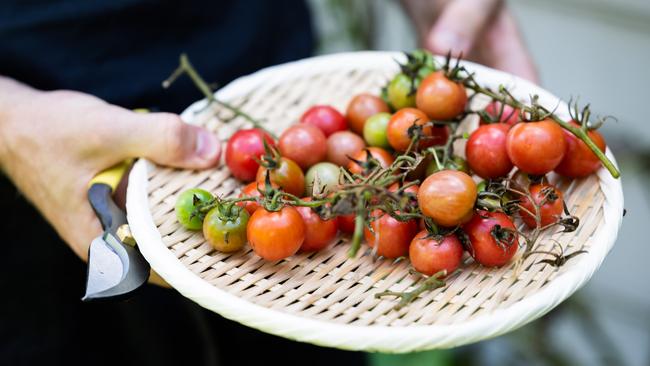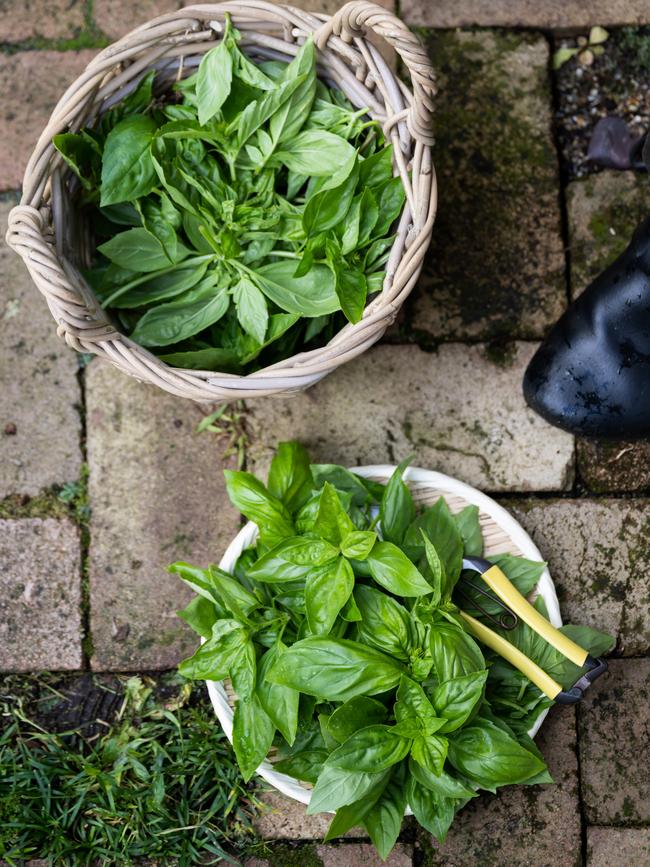Celebrity chef Matt Moran’s tips to cut food costs and save money
Years of practice have taught celebrity chef Matt Moran how to cut costs in the kitchen and make your money go further.
Home
Don't miss out on the headlines from Home. Followed categories will be added to My News.
Growing any living thing creates a great sense of personal fulfilment.
Indeed, the long list of mental and physical benefits you reap from moving your body among nature is well known. But with the cost of living steeply on the rise, can a garden also save you real money in the long run?
To dig a little deeper, we spoke with renowned chef, restaurateur and fourth-generation farmer, Matt Moran.
Moran is the owner of Sydney institution Chiswick, which, as well as being a fabulous spot for a Sunday lunch, also boasts a flourishing and working kitchen garden – the oldest one in Sydney.

While chefs have a reputation for creativity, it’s also a very exacting trade, as they have to budget carefully to keep costs down. So it’s fair to say Moran knows a thing or two about saving cash by growing the produce yourself.
A qualified horticulturist for more than 40 years, Chiswick’s head gardener Peter Hatfield has been looking after the idyllic kitchen garden for 11 years and has some tips to help get you started at home.
GOOD FOR THE SOUL – AND THE SAVINGS
Bursting with verdant green plants, edible flowers, lush foliage and ripe fruit, Chiswick’s kitchen garden is any green thumb’s dream. But aesthetics aside, how important is the garden to the restaurant?
“Our garden is the heart of the restaurant and ensures produce leads the way on the menu, with our focus on simplicity and seasonality,” says Moran.
Having fresh produce at their fingertips allows his chefs to get creative in the kitchen and use all scraps, he says. Everything that “is growing in the garden is on the menu,” and nothing is wasted. Instead, chefs repurpose any leftover produce in ferments and preserves.
You too can think like a chef and do this at home to save money. Turn tired vegies into a delicious stock, chop off the tops of carrots for a zesty pesto and create a creamy soup from broccoli stalks.

Hatfield says another tip is collecting your vegie seeds to regrow at home, saving you money on buying seeds or seedlings.
“We have built up a strong seed bank in our soil,” he says. “Most of our vegetables and herbs are raised from seedlings that sprout seasonally in the garden. Herbs like shiso, rocket, red elk lettuce and Italian parsley proliferate when the season allows.”
PLANNING AHEAD
Chefs usually source produce from all over the country, but rain, frost and natural disasters all impact what comes in the door. But at Chiswick, chefs can predict what’s going in and coming out of the garden. Hatfield says the key to mastering supply and saving money is this forward planning.
“We plan ahead with every menu,” he says. “I always try to get ahead of the game by planting what the chef requires. Dealing with market fluctuations can be tricky, so we tend to grow some high value crops to save money, like our edible flowers, which grow year round. With a small punnet costing up to $12, it doesn’t take much to save money. “Lemon myrtle leaves are also a great, easily grown item that is expensive to purchase at the shops – a bag can cost between $60-80, whereas our local trees easily fulfil the restaurant’s needs.”

SEASONAL GUIDE
Take a leaf out of Moran’s book and allow the seasons to guide you. You will save cash by buying less and you won’t pay extra for fruits and vegetables grown offshore.
“The change of season is always an exciting time in the garden,” says Moran. “Right now we’re growing cucamelons, which are like a sweet cucumber that looks like a mini watermelon. Taylor (head chef) is using them in a charred octopus with herbed salsa dish.”
Chiswick always has a ready abundance of herbs growing each season – from basil, mint, rosemary and thyme to shiso.
“Each morning you’ll see Pete and the chefs harvesting the produce to use on the menu that day,” says Moran. “It doesn’t get any fresher than that.”

WHERE TO BEGIN
You can grow herbs and vegetables in almost any style of container as long as there are drainage holes – you don’t need to buy the most expensive structure.
“Upcycle an old plastic container or styrofoam box and use the compost from your green waste or worm farm to improve the potting mix,” suggests Hatfield. “Organic fertiliser is always the most cost effective and you can buy larger bags to get better value. If you have the space for a vegetable garden, bagged cow manure mixed with blood and bone will supercharge your soil. Top it all off with some sugar cane mulch to insulate the soil and retain moisture.”
Start off with leafy green vegetables such as bok choy, spinach, kale and lettuce, which are all quick growing – you can harvest them in about six to eight weeks.

TOP TIPS TO GROWING YOUR OWN FOOD
Depending on where you live, certain plants may be unsuitable for your location.
For example, Hatfield says some garlic bulbs will never grow in some places, so be sure to do your research before you begin. Another one to watch out for is stone fruit or apples, which shouldn’t be grown in pots.
Many beginner gardeners start with herbs on the window sill, so we asked Chiswick’s Peter Hatfield for advice. The qualified horticulturist recommends starting with thyme, rosemary, oregano, chives, sage and parsley.
• Observation is key. If you have time, check them daily.
• Develop a program for watering and fertilising; set a reminder in your phone.
• Grow your knowledge of pests and diseases.
• Select a suitable location with enough light for your garden.
• Get more life out of your fresh herbs by storing them correctly.
• Wrap them in a damp paper towel and place in an airtight resealable bag in the fridge. Except basil, which should be stored in a jar of water in the kitchen at room temperature.
• And forget growing coriander. “It’s the only herb I know that can flower and go to seed before it grows,” laughs Hatfield.
More Coverage





